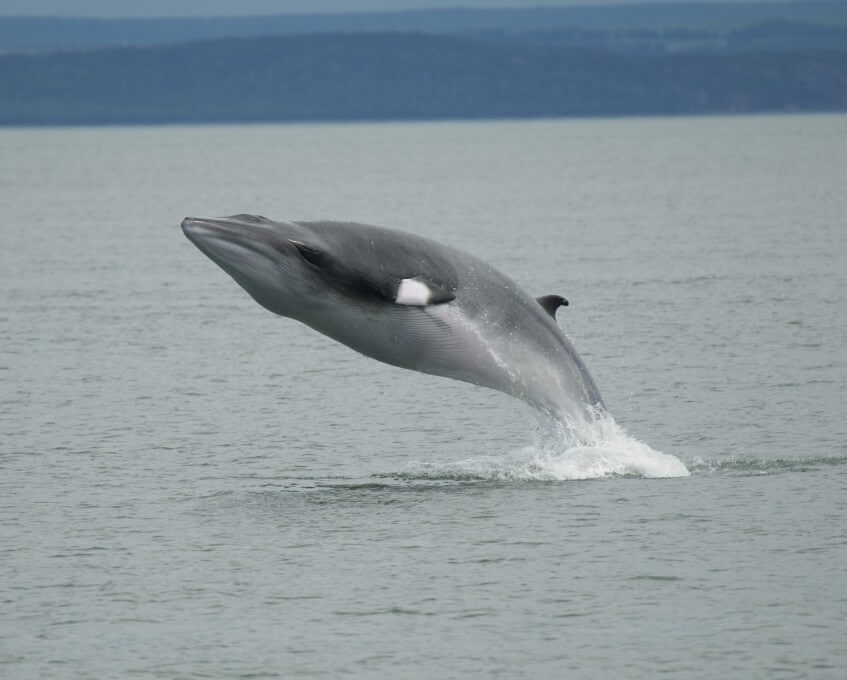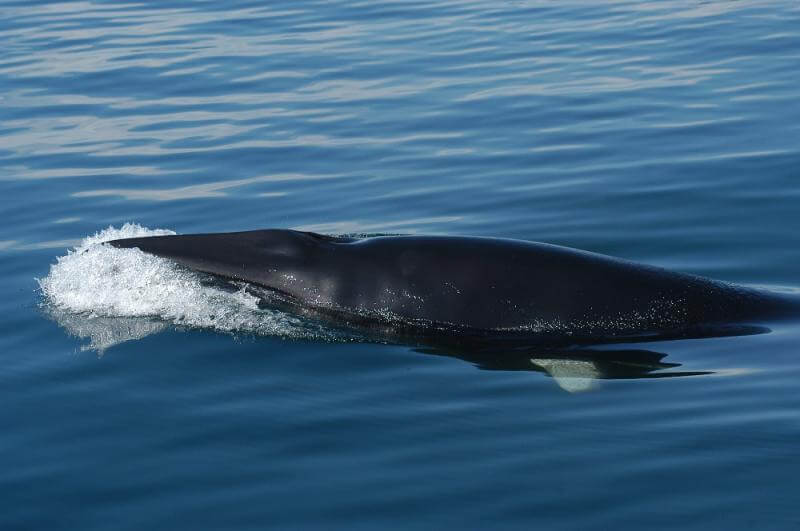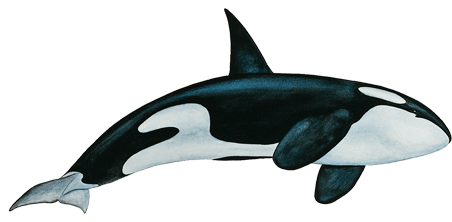Feeding
Minke whales have a very varied diet depending on the feeding area, the season and the availability of prey. During the summer months, minke whales probably spend nearly half of their time hunting and feeding. It is a gulper, feeding on planktonic crustaceans (krill) with a preference for small schooling fish (herring, capelin, sand lances). A large number of faithful individuals, likely associated with a territory, return year after year, specializing in certain types of feeding manoeuvres. Minke whales are frequently observed surface feeding, where they perform characteristic manoeuvres during which one can catch a glimpse of their expanded pink-skinned throat. They swim in circular, elliptical or hyperbolic paths to trap their prey while using currents, rock walls and sometimes even the hulls of boats. It jumps out of the water and lands noisily on its belly or side (ventral and lateral arcs). The Meriscope team even observed a minke whale suddenly turning around on its back, its pectoral fins almost emerged, to swallow the prey trapped between its belly and the surface of the water. These manoeuvres are believed to be chosen as a function of the density of the prey and even the species.
On the surface
They generally come to the surface for 2 or 3 blows. It strongly arches its back before diving again and does not lift its tail out of the water. Minke whales can execute vertical breaches before landing on their belly or back. Series of several dozen repeated breaches at short intervals are regularly sighted, leaving observers dumbfounded. Minkes sometimes show a certain curiosity with boats, surfing in the large waves in their wake.
Diving
The diving behaviour of the minke whale is not well documented. Their dives probably do not exceed a depth of one hundred or so metres, as this is the layer where their prey are found. Dive times are generally short (2 to 3 minutes), but can be in the range of 20 minutes.
Social
The social structure of minke whales is complex due to segregation according to sex, age and reproduction conditions. In the North Atlantic in summer, bulls migrate to the high seas farther north, with cows preferring the more southerly coastal waters and juveniles remaining at lower latitudes still. Likewise, in the St. Lawrence Estuary, the majority of minke whales are females. These animals are rather solitary. Even in areas with abundant prey where 30 or even 60 or so individuals might congregate, stable associations are not observed. Individuals may pair up for a very brief period (2 to 4 breathing sequences).
Vocalization
The minke whale produces low-frequency sounds (80 to 200 Hz), with a repertoire comprising vocalizations of decreasing frequency. According to one study, it might use a series of high-frequency clicks (7,500 Hz). In the Estuary, minkes seem to vocalize less than fin whales.
Reproduction
Sexual maturity is reached between the age of 6 for females and 7 for males. Mating takes place between October and March. Gestation lasts about 10 months and calving takes place between November and March. Nursing lasts 4 months. Mother/calf pairs separate as soon as the latter is weaned, which is generally before reaching their summer feeding grounds. This bond between the cow and her calf is the shortest of any Mysticeti whale.









